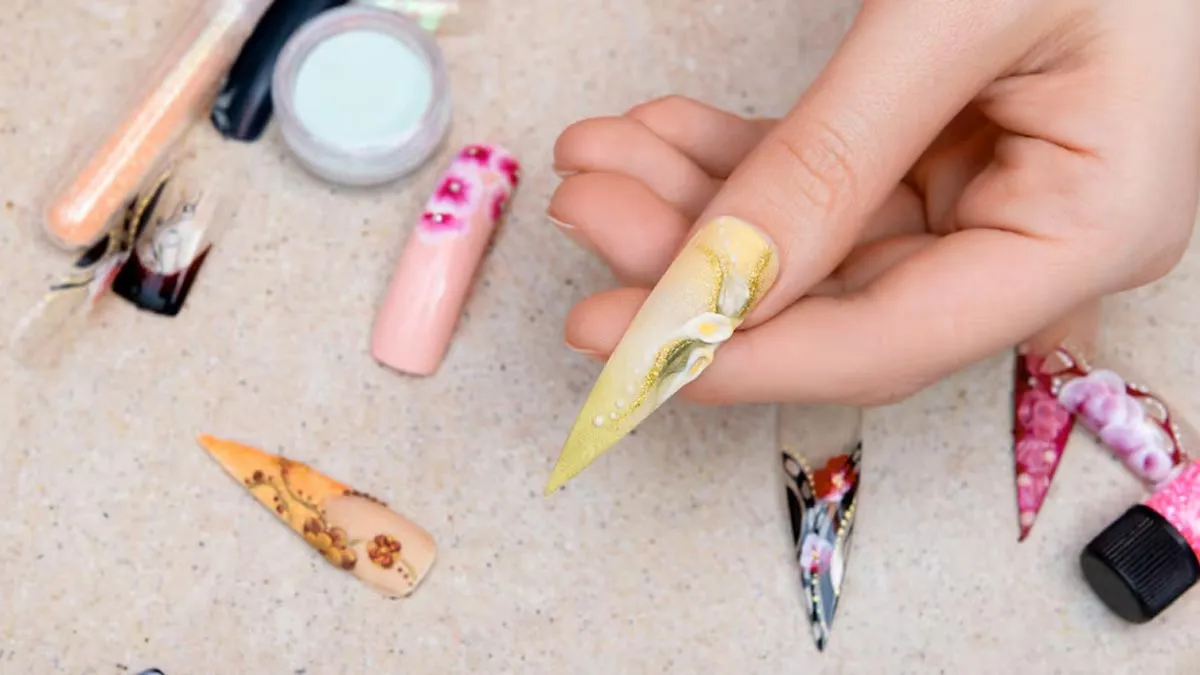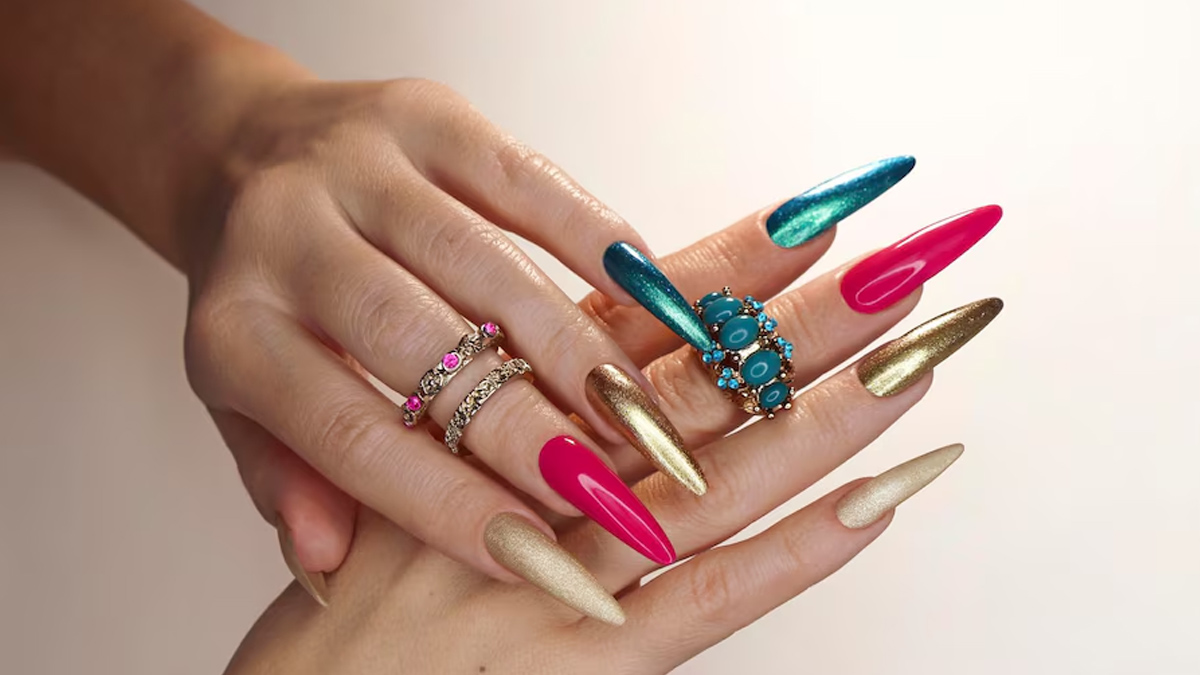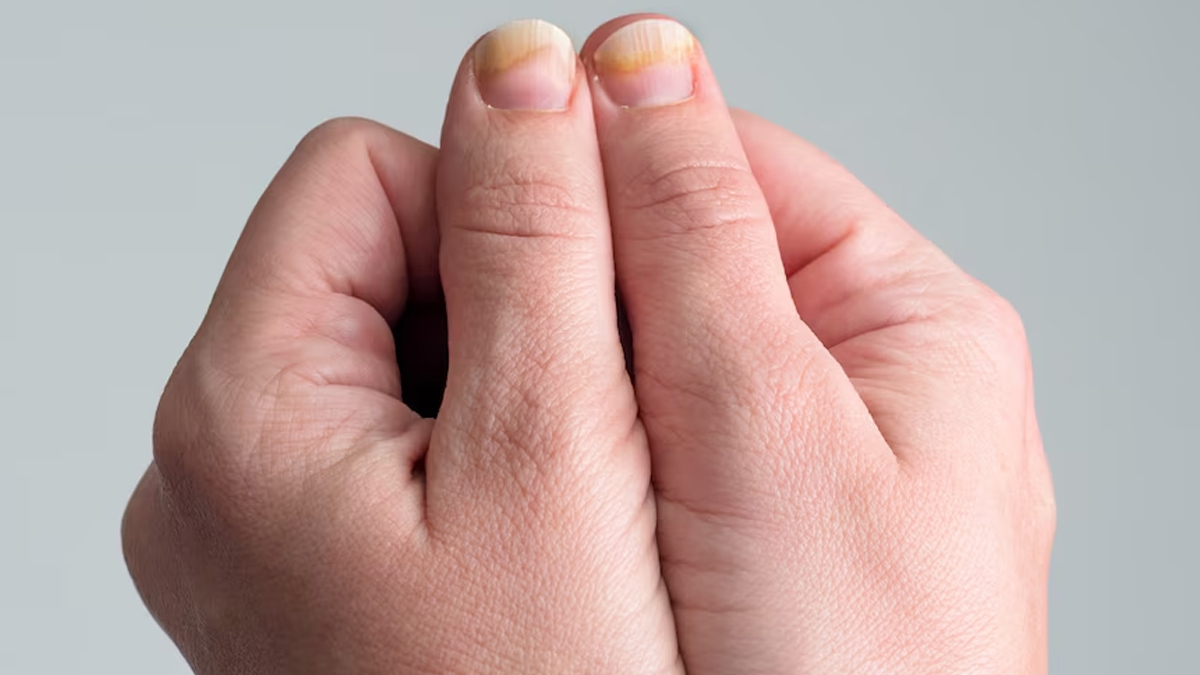
Stick-on nails have become a quick and convenient way to achieve a flawless manicure without the time or expense of a professional salon visit. Whether for a last-minute event or simply to enhance your everyday look, they offer a hassle-free alternative to acrylics and gel extensions. However, are they safe for your natural nails in the long run?
Table of Content:-
To understand this we spoke to Dr Debeshi, Clinical Cosmetic & Aesthetic Expert and Founder of Lueur Aesthetics, to understand the potential risks and best practices for maintaining nail health.
How Do Stick-On Nails Work?

Stick-on nails are applied using either double-sided adhesive tabs or nail glue. The choice of adhesive plays a crucial role in determining how safe they are for your nails. According to Dr Debeshi, "While adhesive tabs are less damaging, nail glue can cause dehydration and brittleness over time. Frequent use may weaken the natural nail structure, leading to peeling, splitting, or white spots (keratin granulation)."
If not applied or removed properly, stick-on nails can also cause trauma to the nail plate. This increases the risk of breakage and even fungal infections, especially if moisture gets trapped underneath.
Potential Risks of Stick-On Nails

While stick-on nails are an easy beauty fix, overusing them can lead to several issues. Dr Debeshi highlights the following risks:
1. Nail Thinning & Weakening
Harsh nail glues strip the natural nail of moisture, leaving it fragile and prone to breakage. Over time, this can lead to weaker nails that split or peel easily.
2. Allergic Reactions
Many adhesives contain cyanoacrylate, a bonding agent that may cause skin irritation or even allergic contact dermatitis. Those with sensitive skin should be cautious about prolonged exposure.
3. Fungal or Bacterial Infections
If stick-on nails are not applied properly or are left on for too long, they can trap moisture and bacteria, creating a breeding ground for infections. This is particularly risky if the natural nail is already weak or damaged.
4. Nail Discolouration
Using stick-on nails without breaks may cause yellowing or dullness. This is often due to a lack of oxygen reaching the nail bed, as well as residual adhesive left behind after removal.
Also read: How to Prevent Hangnails Naturally: Essential Oils and DIY Treatments for Smooth Cuticles
How to Use Stick-On Nails Safely

While stick-on nails are not inherently bad, their safety depends on how often you use them and how well you care for your nails. Dr Debeshi shares some essential tips:
Choose Gentle Adhesives – Opt for adhesive tabs instead of strong nail glues to minimise damage. If using glue, look for non-toxic, breathable formulas.
Limit Wear Time – Avoid wearing stick-on nails for prolonged periods. Giving your nails time to breathe between applications helps maintain their strength.
Moisturise & Strengthen – Hydration is key! Use cuticle oils, nail serums, and strengthening treatments to nourish and protect your nails.
Remove Properly – Never forcefully pull off stick-on nails. Instead, soak them in warm, soapy water or use a gentle, acetone-free remover to avoid stripping away the top layer of your natural nail.
Also read: Skincare 101: Try These DIY Hand and Nail Masks for Softer Hands This Winter
Conclusion: Are Stick-On Nails Safe?
Stick-on nails are safe when used occasionally and with proper care. However, frequent use without breaks or improper removal can weaken your nails over time. If you love the look of manicured nails but want to avoid potential damage, Dr Debeshi recommends prioritising nail health by keeping them hydrated, using strengthening treatments, and opting for regular nail polishes instead.
Also watch this video
How we keep this article up to date:
We work with experts and keep a close eye on the latest in health and wellness. Whenever there is a new research or helpful information, we update our articles with accurate and useful advice.
Current Version